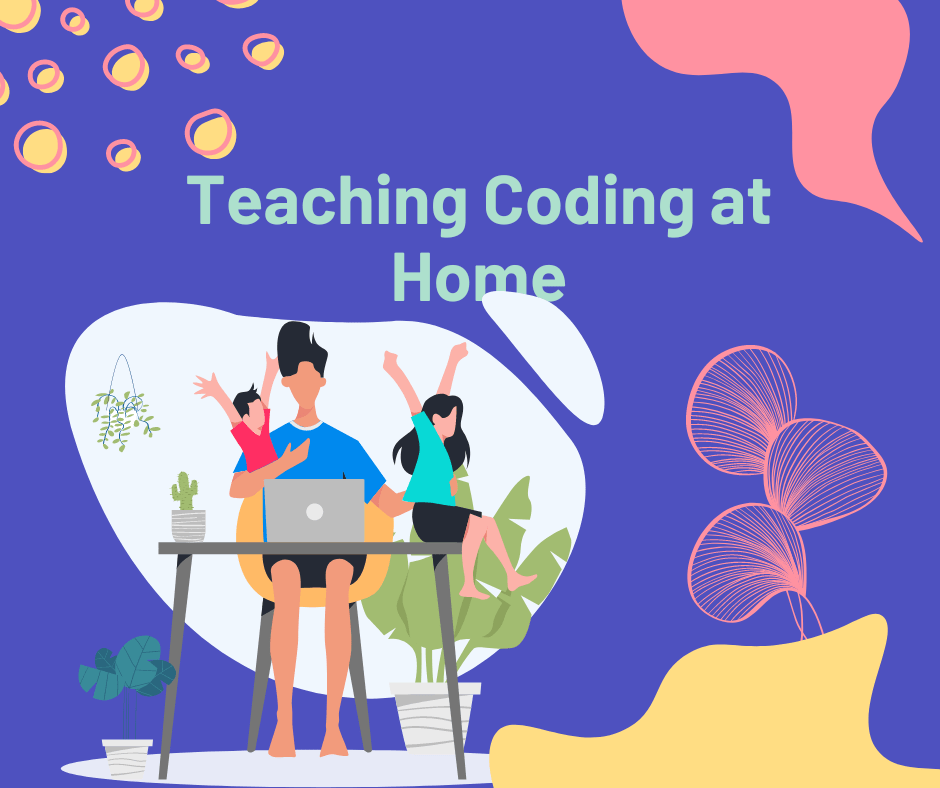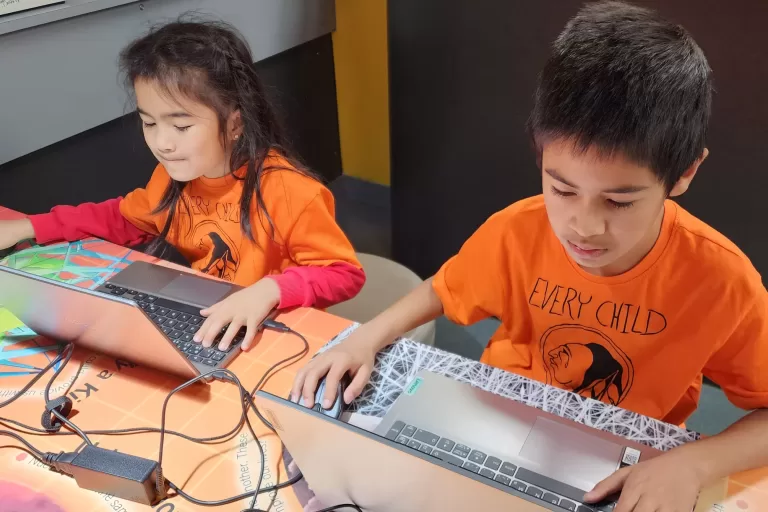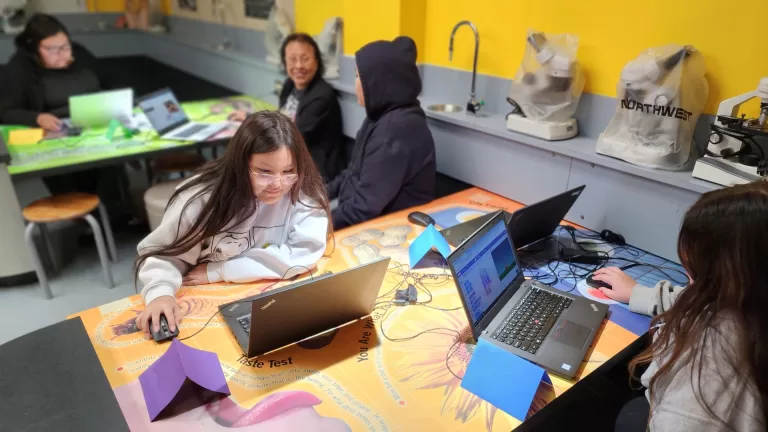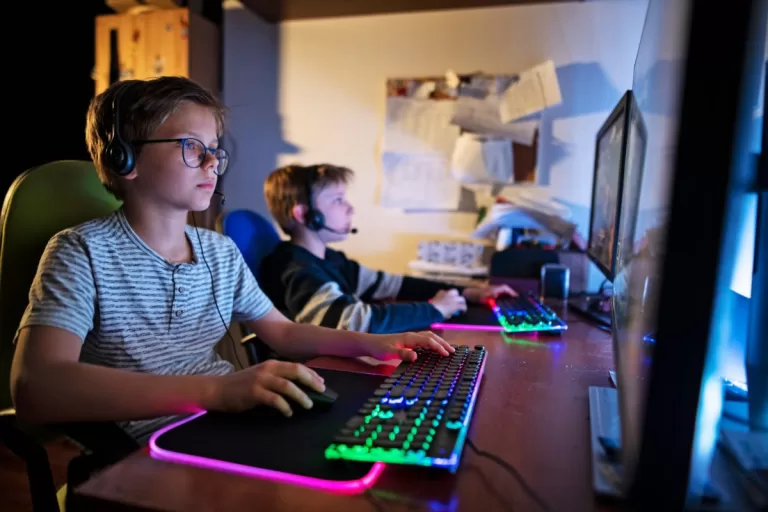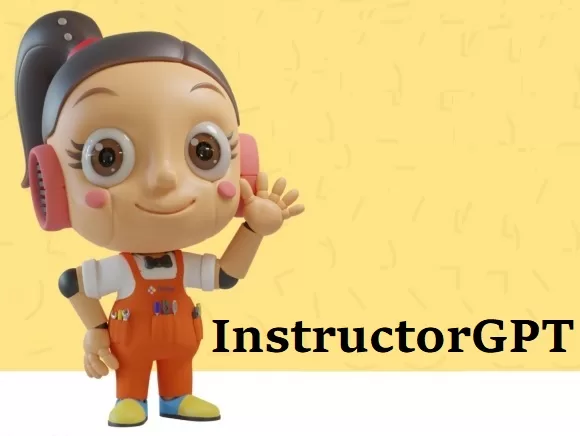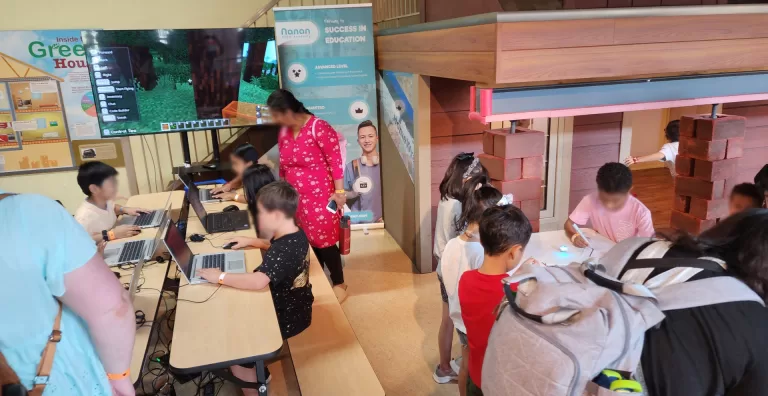Let’s face it, teaching children at home is not easy. Most of us found that out back in the spring of 2020, and I hope we will not have to repeat that. Still, home-based learning programs have many benefits. Most importantly, they allow for an opportunity to deepen the relationship between parent and child.
How Much Screen Time is Enough?
This is a hard question to answer as every family has its own rules. At our home, we try to limit screen time to one hour or less but we are flexible, some days our kids are on a screen more and some days they are fully unplugged. Most importantly, the devices are not available for them to use whenever they want. At ages 6 and 9, our kids don’t have the willpower to resist technology. A benefit of limiting screen time is that when they are learning coding classes, online math, or language they are more engaged as it feels like a special privilege.
Child-Lead Learning Approach
When young children are doing online coding lessons, the parent should be present with the child, but only to encourage them and help if they ask for help. Kids need to progress on their own. Often that means they will spend a ton of time on colouring and drawing characters/backgrounds or writing silly text, inputting super large numbers such as 9999999999 and such. The parent should let them express themselves as much as they feel as this is all good practice and gives them a sense that they are in control of their learning. I encourage my students to replicate the lesson instructions first and then improvise, meaning have fun with it. Kids need to develop a sense of independence in learning. If we are successful at teaching our kids to be independent learners our job as educators and parents is done.
Kids’ Coding Classes are an Opportunity to Teach Math and English
When you see an opportunity, give them little challenges such as; “can you make this faster”, “can you make this colour yellow”, “can you add more fish”, etc. Look for opportunities to expand their math, language, or problem-solving skills without them noticing it. While they are creating games, they are going to use a lot of computational skills, reading and writing. So we are teaching them math and English in a sneaky way.
Teaching Coding Teaches Real Life Skills and Resillience
Another important skill that the creation of video games teaches kids is how to fail forward. In order for your child to solve their coding challenges, they will need to create a hypothesis and then test if it works. When something doesn’t work, kids can find it devastating and quit. It is important to set the expectation that this is experimentation and that her job is to find out what doesn’t work just as much as what works. Help them understand that there are many solutions to the problem and it is up to them to choose how to go about it. Your child will figure out the answer that works for her and that is beautifully empowering.
How Much Time Should They Spend Learning?
For ages 6 to 12, limit their lesson time to 30 to 45 minutes once or twice a week. This may mean they are watching the instructional video for 3 min, doing the work asked in the video for 7 minutes, and improvising and experimenting for 20 min. Later when lessons become more complex and they get a bug for learning that will change. Our students often don’t want to go home when parents come to pick them up. We want this to be limited as it creates a desire for more learning.
Keep in Touch with Other Parents
If you are experiencing any challenges teaching kids coding at home or want to share your successes please drop us a note or join our parent and teacher Facebook group https://www.facebook.com/groups/nanan . Shaun and I would love to hear from you and really hope your and your child enjoy your learning coding journey.

